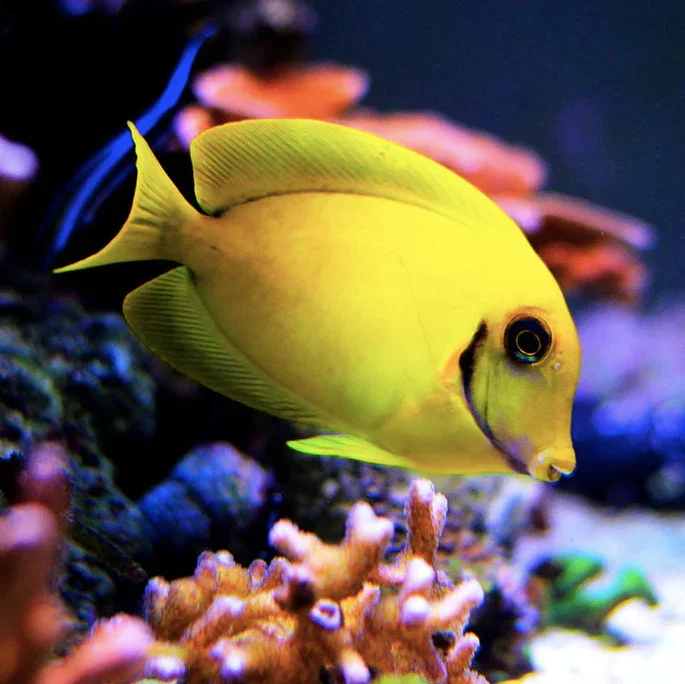
Glossary:
The Mimic tang, or Acanthurus pyroferus, inadvertently mimics certain species of angelfish as a juvenile. While they change color as adults, they still maintain an appealing appearance that make it an attractive addition to a saltwater tank. It’s also relatively easy to care for, which also lends to its popularity as an aquarium fish.
In this Mimic tang care guide, we’ll look into this species to help you determine whether it’s ideal to add to your tank.
The Mimic tang is a generally good fish to keep in a reef tank. As a herbivore, it won’t go after either your corals or invertebrates. The only potential issue you might have comes down to swimming, as the Mimic tang could end up damaging corals when swimming past them too quickly, but you can avoid this issue by placing more sensitive corals in areas where your Mimics won’t hang out.
Mimic tangs are herbivorous and enjoy a lot of algae as their primary meal. You can also feed them Nori and further keep them fed with a refugium.
In addition to these plant-based meals, you can feed them meaty proteins in the form of either Mysis or brine shrimp along with krill.
Also, because they’re highly active, you’ll need to feed them up to three times per day to keep them sufficiently fed.
Mimic tangs are a hardy fish that don’t require too much care to keep them healthy. Pretty much all they require is consistent feeding, ample space for swimming, and live rock for shelter.
The Mimic tang grows to around 10 inches at full length, and it’s a fish that likes to swim as well as hide. As a result, you’ll want to have a tank that’s at least 150 gallons if you plan on keeping an adult.
When the Mimic tang is in its juvenile stage, it takes on the appearance of an angelfish with blue highlights surrounding its yellow body. However, as it grows, the color will darken as it begins to take on more of a tan or even black appearance with yellow around the edges. Sometimes, they develop yellow and red highlights around the eyes or pectoral fins.
The cost of a Mimic tang will depend on numerous factors, including the availability and size of the fish, but you can expect to find this fish at around $50 to $100 or more. They’re not the most expensive fish, but you should expect to spend a bit of money on one of these specimens.
Here are some interesting facts about the Mimic tang you might want to learn:
You can keep other tangs in your tank as long as they’re visibly different and are close to the same size. These tangs you keep could include Naso tangs, Yellow tangs, or Hippo tangs.
Want to purchase a Mimic tang for your saltwater aquarium? You can find this species at the following aquarium shops:
The Mimic tang is a potentially great fish to add to your tank if you’re able to give it the proper care, as a fish that’s both entertaining and easy to maintain.